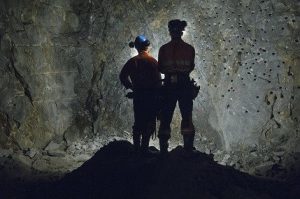 Earlier this year our Director of Materials Science Dr. Neil Kidner presented at the 43rd International Conference and Exposition on Advanced Ceramics and Composites (ICACC 2019) in Daytona Beach, Florida. In Part one of this series he discussed the importance of accelerated testing to achieve long-term results, in this second except from his talk he discusses the challenges of material scarcity in the supply chain and the opportunity that gives us to look for new and better materials in our fuel cell projects.
Earlier this year our Director of Materials Science Dr. Neil Kidner presented at the 43rd International Conference and Exposition on Advanced Ceramics and Composites (ICACC 2019) in Daytona Beach, Florida. In Part one of this series he discussed the importance of accelerated testing to achieve long-term results, in this second except from his talk he discusses the challenges of material scarcity in the supply chain and the opportunity that gives us to look for new and better materials in our fuel cell projects.
For most of its history, the United States has been primarily self-sufficient in the materials used to power industry. However, the computer revolution, and the growth of electronics and new energy generation and storage technologies has increased demand for alternative materials that present greater supply-chain challenges. For example, cobalt being a critical material for both solid-oxide fuel cells (SOFCs) and batteries is geographically concentrated in the Democratic Republic of Congo (67-percent of production) and cobalt refining is controlled by China.
Furthermore, increasing cobalt production to support the rapid growth of batteries for electric vehicles and energy storage is challenged by the lack of infrastructure and the fact that cobalt is produced as a by-product from the mining of copper and nickel. A further issue that has affected cobalt production is the hazardous and unethical mining of the metal. It is estimated that approximately 15-percent of cobalt produced in the DRC is from unregulated artisanal sources that are associated with child labor and human rights abuses.
Speculation over future supply deficits have fueled price volatility for these materials and has motivated the search for alternative materials that are less vulnerable to price fluctuations and do not have the supply chain challenges. Research into new fuel cell and battery technologies has led to many exciting material chemistries but identifying a path to cost-effectively scale these materials from lab-scale to high volume manufacturing is difficult. New materials need to be qualified and lot-to-lot process variation needs to be understood
In addition to establishing a robust raw materials supply chain and strong supplier relationships to secure the supply of current raw materials, it is also important to also identify alternative chemistries that use lower-cost and readily-available raw materials to provide risk mitigation against supply disruptions. Nexceris is currently working on cobalt-free Lithium Ion battery cathodes and identifying alternative coating and cathode formulations for solid-oxide fuel cells that replace cobalt with more copper and zinc.
